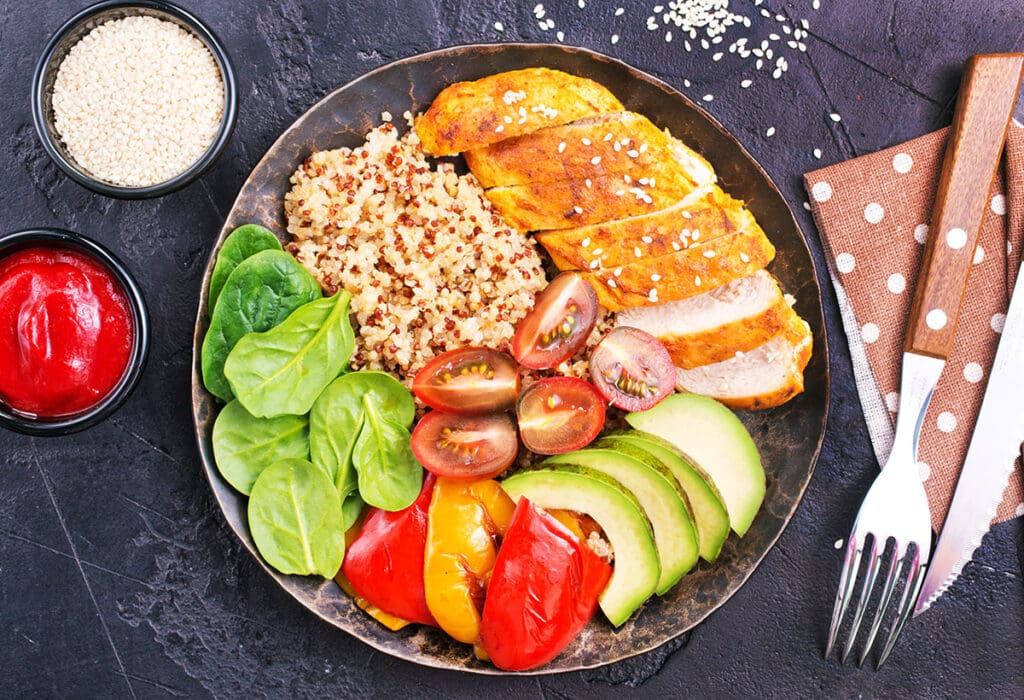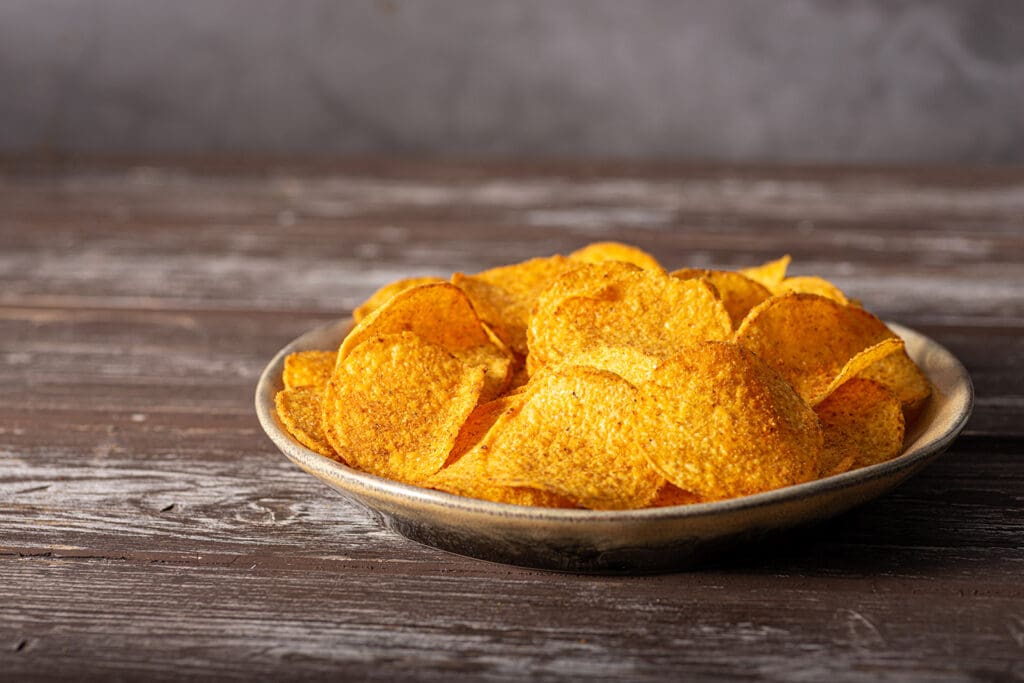I do not love the model of counting calories, because no matter what, you will always need to have a deficit in your calories. Say you eat 2,500 calories a day right now, and you cut that down to 2,000. You are going to lose weight and that’s great. But, at some point, your body’s going to plateau and then you’re going to have to cut it down to 1,500 and then 1,000 and then it’s going to keep going until you reach your desired weight. Then you have to maintain that. This is why I don’t like this model
Another thing is that a calorie is an energy. Your body burns energy, right?
You want to give your body the best nutrients possible. If you took a thousand calories of broccoli compared to a thousand calories of potato chips, obviously, we know one is healthy and one is junk. You could eat a thousand calories in broccoli every day, which is incredibly difficult to do because of how filling it is, and not have to worry about gaining a ton of weight. Why? Because your body is using the resources and nutrients and the energy in that broccoli to fuel your daily habits and your daily life.
If you eat a thousand calories in potato chips, which I know is not hard to do, that isn’t going to do anything to your body. In fact, what it’s going to do is it’s going to create what we call glucose spikes. Whenever we eat, our body uses glucose as energy. Our pancreas is like, here’s your insulin. I’m gonna take the insulin and I’m gonna put it in the cell so the cells have energy. Once those cells are full, then there is no more room, no place else for the glucose to go. So the insulin goes to your cell, it knocks on the door, it says, hey, I got some glucose for you. The cell goes, no, thank you, I’m full. Once all your cells are full, your body has to then figure out what to do with those glucose spikes.
Well, that glucose that is floating around in your blood needs to go somewhere. So one thing your body will do is what we call hypoglycemia. Your blood sugar will drop and you’ll get the shakes, you’ll get fatigued, certain issues like that. Then your body will crave something sugary like juice or something like that, so your blood sugar levels can go back up, and we don’t have that drop. Another thing that will happen is that your body will create fat storage cells, especially around the abdomen, which I know we all love and we all say it’s so hard to get rid of. Well part of the reason it’s so hard to get rid of is because that is your body’s protection layer against your glucose spike levels. So what it does is it pulls the glucose out of your blood and it creates a fat pocket so that way you’re protected and then your fat pocket goes into different fat cells and here we have belly fat. Obviously, nobody likes belly fat.
One of the things I like to do is make sure that you are getting an adequate amount of protein. Protein is good for muscle building, muscle mass, and maintaining your muscles. It’s also good for helping keep up with your magnesium levels. It’s great for your blood sugar levels. It’s great for your energy, for your growth hormones. You need protein. Usually, there are some different formulas that people can look at to see how much protein you need, but usually you try to aim for about 25 to 35 grams per meal.

Yes, that’s hard, but one of the reasons it’s hard is because you’re not going to fill up on sugar and carbs if you’re eating fat and protein. Another thing is vegetables. Always have a vegetable with whatever you’re going to eat, corn doesn’t count, the greener the better. I like to use these few tricks. I got these from a lady called the Glucose Goddess. She has a lot of great tips and tricks on helping with glucose levels, but one of the simple tricks, don’t change what you’re eating, but change how you’re eating it. One of the things that you can do to start she calls a veggie starter. Eat your vegetables first, have green beans or peas or whatever it is that you want.
Having that on your dinner plate is going to work wonders. What it’s going to do if you eat that first, it’s going to coat your intestinal lining in a fiber mucosal layer. Then when you eat something like mashed potatoes or you have a piece of cake, that’s going to slow the absorption rate in your stomach. Then you will not have as quick of a glucose spike. If you drink juice, that immediately goes in the blood and blood sugar is through the roof and then crashes back down. If we have vegetables first before we have our piece of cake, then that’s just gonna slow the rate of absorption because of that fiber lining that it’s lining your stomach with.
The next thing is then eat your protein, and then eat your fat. Then if you’re still hungry after all of that, then eat your carbs. So, if you want a piece of cake, have it right after your lunch. If you love mashed potatoes and gravy, have it, but have a veggie first. Have a salad first, then eat your steak, and then eat your mashed potatoes, because you are going to lower your glucose level spikes. You will avoid that midday crash which people usually have between 1:00 and 3:00 where they feel very tired and groggy. You either ate too much, or your glucose spike levels are too high, and your body doesn’t know how to bring them back down and it’s working so hard that you are tired.

We need to reframe how we’re thinking. Yes, I’m gonna say lowering our carb intake, but use these tricks. Don’t ever eat dessert on an empty stomach. Have two tablespoons of apple cider vinegar before your meal. Another thing that you can do is, if you didn’t eat your food in the right order, or I just had a really bad lunch today because I I was struggling and I ran and grabbed McDonald’s, or I had ice cream for lunch, whatever that is, take it and then go for a walk afterwards, or just do a simple movement like do some dishes or some laundry. Something that’s going to be moving your arms and your legs. Walk up a flight of stairs like three or four times in your house. Those things are going to activate your body so that you have a significantly lower glucose spike.
If you want to get strict on macro counting, go for it. Keep the healthy fats in there though. I don’t love having to take fat out, because your body needs fat. The hydrogenated oils like canola oil, soybean oil, corn oil, get those out of there. But, if you’re doing avocados, and if you’re doing olive oil, those are great fats. Shrimp is a wonderful protein and a wonderful fat, and you will stay fuller longer. Same with eggs, and eggs have tons and tons and tons of nutrients. They’re one of the best sources of protein that you can eat, provided you don’t have an egg allergy, obviously.
Those are my tips. Eat your veggies first before your meal. Always have a dessert right after a meal, not before a meal or in the middle of the day. Go for a walk after you eat, or do two teaspoons of apple cider vinegar, in about four to eight ounces of water if you don’t want to shoot it, half an hour before your meal. Those things are going to significantly help reduce your glucose spikes. Lower glucose spikes mean less insulin in the body. Less insulin in the body means better hormonal balance. Better hormonal balance means less fat deposits, more energy, and happier you.
Achieving your health goals can be hard, a nutrition guide can help get you on the right track. Call to schedule a consultation today!


